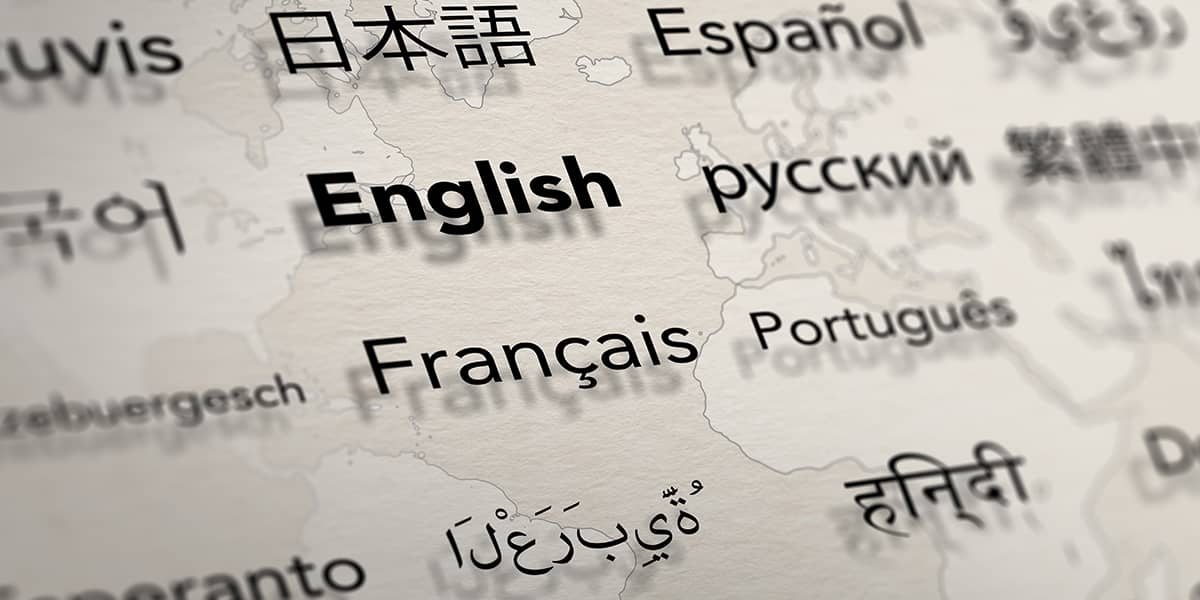Decoding Multi-Lingual Labels: Best Practices for Accurate and Culturally Sensitive Translations
The global marketplace has made multi-lingual labelling an operational necessity for food, cosmetics, food supplements, and nutraceuticals. But multilingual labelling is not just a matter of converting words from one language to another. Rather, it is a complex intersection of language, law, and cultural expectation. A product label must not only inform and comply, it must resonate with the local audience, preserve brand integrity, and avoid costly missteps.
Let’s explore the challenges and strategies involved in multilingual labelling, examining the risks of mistranslation, the regulatory requirements across key markets, and how companies can streamline the translation process while maintaining accuracy and compliance.
The Subtle Weight of Cultural Language
A label can make or break consumer confidence. Even when the information is factually correct, a culturally inappropriate phrase or awkwardly translated term can create discomfort or confusion. In some cases, it can even be offensive.
For example, in German-speaking countries, overly casual or marketing-heavy English slogans, when translated literally, can come across as unserious or lacking credibility. In contrast, French-speaking markets are more accepting of romanticized phrasing but have stricter expectations for formality and linguistic structure. A supplement labelled as “energizing” in English might be translated as stärkend in German, which has a distinctly different connotation. The nuance matters. These subtle linguistic shifts influence how a consumer perceives safety, efficacy, and legitimacy.
There is also a legal dimension to cultural language. Terms like "natural," "organic," or "clinically tested" are regulated in many jurisdictions and can have different thresholds for usage depending on national frameworks. Literal translation without considering legal definitions can result in non-compliant claims or misleading labelling, both of which carry enforcement risks.

The Regulatory Framework Behind Translations
Across the European Union, multilingual labelling is governed by harmonized rules for mandatory information. Food and food supplements must comply with Regulation (EU) No 1169/2011, which requires that ingredient lists, allergen declarations, nutritional information, and country of origin labelling be presented in a language easily understood by the target consumer in each Member State.
For cosmetics, Regulation (EC) No 1223/2009 outlines similar requirements, including translated precautionary statements and product function if not obvious from presentation. In some countries, such as Belgium and Luxembourg, the same product may require labels in French, Dutch, and German - raising both regulatory and operational complexity.
Health claims present a unique challenge. Translating these into multiple languages while preserving meaning and legal compliance demands linguistic precision and deep familiarity with the regulatory context.
In non-EU markets, further variation applies. Canada mandates bilingual labelling (English and French), with strict formatting rules, while Gulf countries may require Arabic as the principal language. In Japan or South Korea, regulatory authorities maintain control over phrasing conventions that often differ from Western norms. Misaligned translations can trigger delays at customs or, in severe cases, product recalls.
Machine Translation Is A Risky Shortcut
With the increasing sophistication of machine learning models, translation tools have become faster and cheaper. But when applied to regulatory labelling, these tools carry inherent limitations.
First of all, machine translation is often context-agnostic. It can produce grammatically accurate phrases that lack the cultural or legal nuance required for regulated products. For instance, a well-known online translator might convert “immune system support supplement” into a medically misleading term in certain languages, inadvertently implying a therapeutic function.
There are also semantic risks. A machine might not distinguish between “calcium carbonate” and “calcium lactate” if not programmed to recognize them as distinct substances, leading to ingredient list errors. Such mistakes can result in labelling non-compliance, legal liability, or eroded consumer trust.
This is why human regulatory translators remain essential. These professionals are trained not just in language but in science and regulation. They understand the weight of a health claim, the importance of allergen terminology, and the implications of labelling errors. They are also equipped to navigate evolving regional requirements and maintain stylistic consistency across different products and languages.
Managing Translation Across Markets: Workflow Matters
To reduce errors and inefficiencies, companies must treat translation as an integrated component of product development and compliance. A structured approach can significantly streamline the process.
The first step is to map the translation process across departments. Marketing, regulatory affairs, and quality teams should be involved early to define who owns what, when translations are needed, and how approvals are managed. Centralizing approved terminology in a shared glossary helps maintain consistency across product lines.
Version control is another critical element. Minor changes to formulation or label layout can lead to cascading errors if translated documents are not updated simultaneously. Many companies now use regulatory content management systems that integrate translation workflows, enabling easier tracking of revisions, sign-offs, and market-specific adaptations.
Additionally, regional affiliates or distributors should be consulted during review cycles. They can provide input on whether a label meets local expectations and complies with market-specific customs, such as font size, layout orientation, or packaging materials.
Some organizations implement a tiered translation process: the first pass by a regulatory linguist, the second by a native reviewer with market experience, and a final compliance check from the legal or regulatory affairs team. This approach, while more resource-intensive, often prevents more costly rework or enforcement action down the line.

Avoiding the Most Common Pitfalls
Unfortunately, several missteps continue to appear across the industry. One of the most frequent is recycling English slogans or brand messages without local adaptation. A phrase that performs well in the UK or US may seem strange or carry unintended connotations elsewhere.
Another common issue is the underestimation of space constraints. Translations, especially in languages like German or Finnish, tend to be longer. This can lead to last-minute changes in layout or font size that violate labelling rules. Planning for expanded text early in the design phase can save both time and rework.
In some cases, companies neglect to harmonize translations across similar products. This results in inconsistency and brand fragmentation. Creating a central repository of approved claims, translations, and graphic templates allows for more efficient scaling across product families and markets.
Language as a Compliance Asset
When executed with precision, multi-lingual labelling becomes a significantly strategic asset. It enhances credibility, supports regulatory compliance, and fosters trust in diverse markets. Achieving this requires more than advanced language skills, it demands cross-functional coordination, regulatory insight, and a clear understanding of cultural context.
The investment in specialized translators, controlled workflows, and robust oversight is an essential component of product quality and global market readiness. In regulated industries, language has power, and every word counts.






